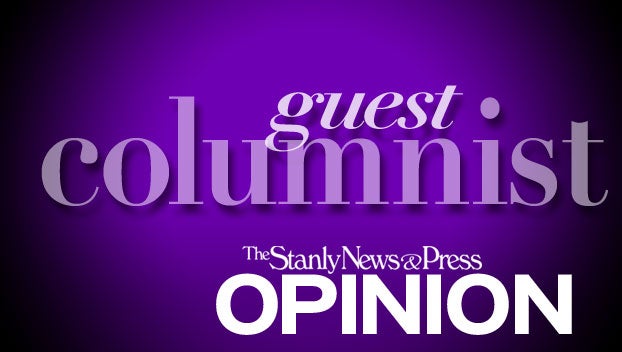MIKE WALDEN COLUMN: What can be done about the national debt?
Published 12:32 pm Saturday, July 27, 2019
There’s one question I can almost always count on being asked at the scores of public presentations I give each year about the economy. The question is, what are we going to do about the national debt? If this question is common and important, then why haven’t we done something already about the debt?

Mike Walden
Indeed, not only have we not done anything about the current $22 trillion in national debt, but we’ve been making the debt hole bigger. Both the dollar amount of the debt and — more importantly — the size of the debt relative to the size of the economy, have been rising.
There is a logical explanation for our recent apparent collective indifference to the debt.
What matters most for any entity — whether it is a household, business, or government — is how much it costs to carry debt. Importantly, the answer to this question depends on the level of the interest rate charged to borrow money. The lower the interest rate, the cheaper it is to carry debt.
In the last 30 years interest rates in the U.S. economy have fallen by an amazing 80 percent. As a result, interest costs on the national debt as a percent of the economy are half as much as in the late 1980s, even with the amount of debt being seven times larger.
But recently, we’ve seen interest costs on the national debt taking more out of the economy. Furthermore, economists at the nonpartisan Congressional Budget Office (CBO) project the size of the national debt relative to the size of the economy will reach record levels in a few decades, and interest costs on the debt as a percent of the economy will almost hit a record.
So what should we do? Of course, a big part of any solution is political, since the debt is tied to spending and taxes. These are always controversial topics for elected representatives.
I’ll leave the politics to others. However, my discipline — economics — can offer some ideas for a solution to the national debt. I’ll present one such solution and let you decide if it makes sense.
The economic solution begins with the premise that there are two types of government spending. One is spending providing services with immediate benefits. Examples are spending on health care, military personnel and food assistance. Economists call this category “current spending.”
The second type of government spending is for programs considered to be investments because they result in long lasting benefits for the recipients. Spending on roads is a good example. Highways last several decades and provide benefits to drivers now and in the future. Spending on military hardware, basic research and even education also provide long-run benefits. This type of spending is labeled “capital spending”.
This distinction in types of government spending is important because economists recommend different ways of funding each category.
Current spending should be funded from current revenues because the benefits occur mainly to current taxpayers. In contrast, capital spending can be funded with borrowing; in fact, some economists argue capital spending should be funded with borrowing. This is because future taxpayers are the major beneficiaries of the capital investments. The idea is to borrow the money, develop the capital project, and let future taxpayers foot the bill by making the debt payments.
The CBO estimates 16 percent of the annual federal budget qualifies as capital spending.
In 2018, this translated to about $500 billion of federal spending being capital spending. Hence, this amount of money could – by economic logic — have been borrowed. Instead, the federal government borrowed almost $800 billion that year.
Therefore, one approach to federal government borrowing is to adopt the approach of two budgets — current and capital — and to restrict borrowing to the capital budget. In fact, this is the logic used by most state and local governments as well as by businesses.
Even if the federal government followed this advice, there’s one remaining thorny issue. The establishment of current and capital budgets and the restriction of borrowing to capital spending would apply to the future. It would do nothing to change the borrowing the federal government has already done and is on the books to the tune of the $22 trillion national debt.
Our friends at the CBO calculate roughly $4 trillion of the $22 trillion national debt is based on capital spending. So we would be justified in continuing to carry $4 trillion in national debt. But this still leaves $18 trillion as debt related to past “current spending.”
If we wanted to retire this $18 trillion debt over the next 30 years, applying current interest rates would require an annual payment of slightly more than $900 billion. Obviously that’s a lot of money, and the big question is where the government would get it. Would new taxes be needed, or could existing spending amounts be changed and shifted?
When people ask me about controlling the national debt, this is the plan I discuss. With a show of hands, I’ll let you decide if it’s a reasonable approach.
Mike Walden is a William Neal Reynolds Distinguished Professor and extension economist in the Department of Agricultural and Resource Economics at North Carolina State University who teaches and writes on personal finance, economic outlook and public policy.


